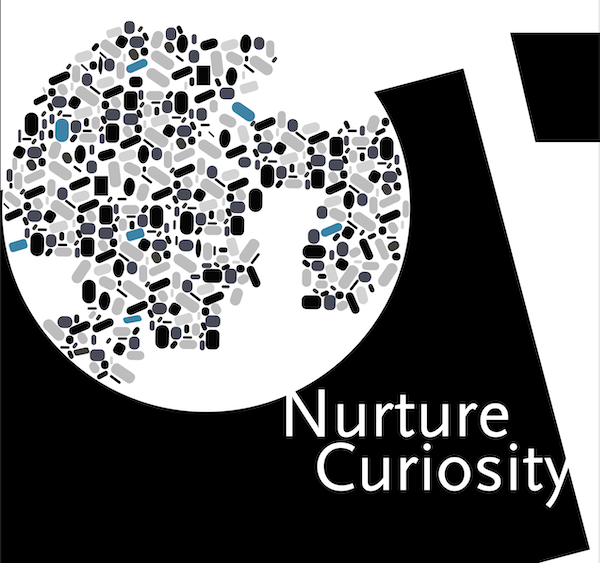
5 minute read
"Broken Body Kaleidoscope"
By H.N. Silva
It’s ironic for me, as a current atheist, to share my journey with the eucharist. The overall image I have is of a kaleidoscope, as are most understandings in my life. This all might seem broken, perhaps it even is, yet somehow it also creates a symphonic masterpiece. It is not lost on me that the root words of kaleidoscope are beautiful, form, and scopetherefore I live it.
I grew up in a Christian tradition where the eucharist was done once a month and was a serious, somber occasion. Internal confessions were to be made during silent prayer beforehand, coming with purity of spirit to be able to reverently participate. I remember one of the first times I partook in the eucharist, as a pre-teen, after I had eaten the bread, I immediately felt guilty, not because my intentions had not been earnest, but because I somehow feared they were not enough. My other early point of reference of this ritual was from a church that only came to the table once a year, folks dressed in white, and you had to be baptized (as an adult). Here there was wine, no grape juice. You can imagine how holy this sacrament was presented to me.
During my time in undergrad at an interdenominational school started by Anabaptists, communion became less daunting, though still special, being offered during occasions to mark meaningful moments. This time additionally included visiting different churches and seeing how each one engaged with this ritual. I observed the various theological interpretations and understandings of the eucharist. There were even churches where I was not able to participate in communion, as I was not an official member of their church.
As I continued to attend different churches afterwards, I witnessed even more manifestations of this sacrament. I saw children partaking; I saw sustenance and liquid being offered; I experienced full meals together; I experienced walking to the front altar to receive the elements. It is in this last particular experience where I encountered the inquiry of whether I drank from the cup or partook by intinction. It was not only a question of hygiene but also of my theological feelings on the matter and their implications. As I attended these various churches, supported by my passion for ecumenical revelation, I believed that communion was not only a moment that connected me to the divine, it connected me to my fellow congregants, no matter if I was in an ongoing relationship with them or this would be the only time we feasted together. It ultimately connected me with anyone I had ever taken communion with! I found this wonderfully beautiful and deeply meaningful and an important part of my understanding of this spiritual experience. I began drinking from the cup directly to symbolize this binding. Communion was therefore not only a reminder of my belonging with the divine, but my belonging with the whole church, as distant and varied as it was. The eucharist was moreover my reminder of the divine’s love and my commitment to sacrificial love, as well as a covenant of forgiveness and grace for me, and as an imperative result, to be extended to all those I was in connection with.
As I have walked away from Christianity, it’s an experience I miss; however, by not participating I acknowledge the importance and reverence it has for others and for finding my welcome elsewhere. Today my bread and cup and community-making is quite different. I would rather see all folks be fed and housed, where food and drink is shared with no mention of a deity. I would rather there be love on earth that unequivocally depends on the collective liberation of all, where systems and structures are deconstructed and better ones built, where belonging is not just an individual endeavor but a collective and societal one. I no longer find comfort and freedom within the church. This path of embodiment I am on, the mystical union of spirit and body, is asking for more, more towards this earth that I interestingly live on. This path is asking for my understanding into how to inhabit it, be with it, and with others far outside the institution of the church and Christianity. My communion is with nature; my bread and cup tangibly displayed and understood as still being developed, in large part due to the isolation during this ongoing pandemic.
Wikipedia indicates that a kaleidoscope in “rotation ... causes motion of the materials, resulting in an ever-changing view being presented.” Similarly, my concept of what is communion is an ever-shifting collage of images and impressions. It’s a journey I am happy and curious to continue on, wherever its unique and unorthodox meanderings lead me. I am discovering anew the essence of this mystery. I sit and quietly listen in holy wonder to the great unknown-universe. For if nature is a manifestation of the divine, as some say, do I not want to experience its magnificent diversity?
H.N. (Noah) Silva (they/them) is a former activist, community builder, and amateur public theologian who is now trying to make sense of the world and universe through a nihilist, spiritual, atheist perspective. They spend their time in creative pursuits while wondering if nature, grief, and radical rest might have the answers to collective liberation.







